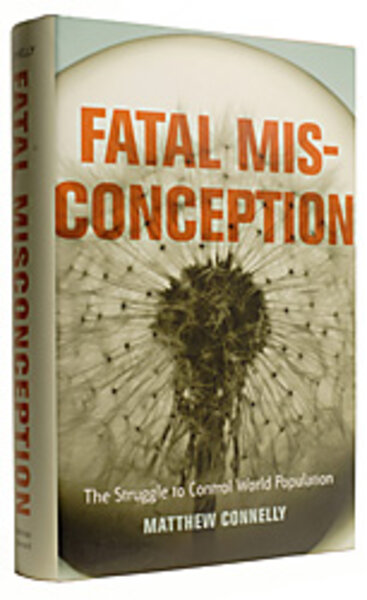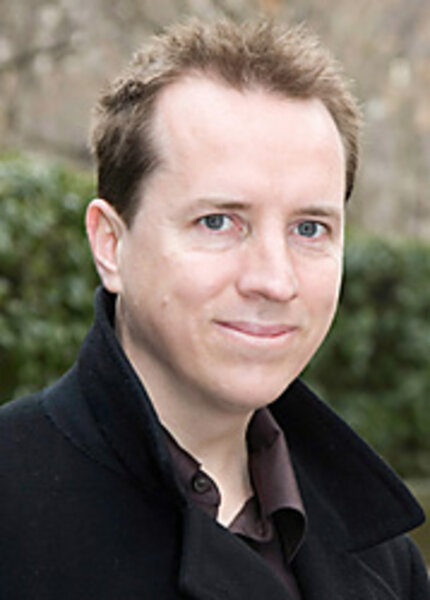Family planning gone awry
Loading...
Columbia University historian Matthew Connelly makes no effort to mask his support of reproductive rights in this disturbing and compelling global history of population control programs. The dedication in his most recent book, Fatal Misconception: The Struggle to Control World Population, reads "To my parents, for having so many children."
Connelly, the youngest of eight children to Roman Catholic parents, nonetheless manages to write a fairly balanced history of the broad population-control movements in the 20th century. As populations and life spans rose dramatically over that time period, countries and organizations initiated immigration restrictions, breeding programs, compulsory sterilization, and other directives aimed at adjusting human reproduction.
Often launched under the guise of reducing poverty and even saving the earth, family planning became a means for wealthy foundations, foreign aid agencies, the United Nations, and others to plan other people's families, he concludes, and without the perpetrators having to answer to anyone. On the day the author was born in 1967, the cabinet of India under Indira Gandhi first considered compulsory sterilization for parents with more than three children.
What sparked the broad efforts to control population? In the 20th century, internationalization made the world seem smaller even as life spans increased. In the past century, humans have lived more than twice as long as in the previous 2,000 centuries and grown more than four times in numbers. By the 1980s, the earth was gaining about 80 million inhabitants per year.
Connelly criticizes Ms. Gandhi, influential author Paul Ehrlich ("The Population Bomb"), and other thought leaders who agreed that only population control could save the world from poverty and other maladies. The 20th century marked the first time the future of a species – not only its numbers but also its nature – became the object of its own design, he writes. People eradicated diseases, regulated migration, and manipulated fertility rates. Human populations became the subject of scientific experiments and political struggles. The stakes – and the consequences – were huge.
Americans were the first to pursue policies to shape the world population and played a leading role in institutionalizing the science of demography and the political strategy of family planning. But critics on both the left and the right have attacked population control as something perpetrated by white, wealthy, elite people (especially in the United States), upon the rest of the world, particularly poor nations, where populations had been spiraling out of control.
The author sets out to demonstrate how some leading population control groups acted in underhanded ways, pretending to advance one agenda such as a rise out of poverty or the betterment of mankind, while harboring another such as breeding out perceived misfits.
One example is eugenics – selective breeding to produce better people – which did not end with the Nazi Holocaust; it continued in several American states, Scandinavia, Japan, India, and China. Eugenics culminated with India's sterilization camps and China's one-child policy.
Drawing from records in more than 50 archives in seven countries, including those from Planned Parenthood and the more recently opened Vatican Secret Archives, Connelly provides extensive examples of movements to adjust populations. He adds detailed and useful information and sources in an extensive section of notes at the end of the book.
The impact of the 20th century's many and varied programs to control population have changed the world, and sometimes in unexpected ways. Throughout the 20th century people were promised that they'd have more things if they had fewer children.
But now that Asians have reduced their reproductive rate to 2.1 children, for example, there are other issues to consider. If they also have air conditioning and automobiles, they will have a much greater impact on the global ecosystem than a billion more subsistence farmers, he writes.
The world population growth is slowing and the age of population control appears to be over for the moment, but Connelly writes that his book is not just about history: It is a cautionary tale about the future.
Future challenges such as global warming and population stabilization in countries with aging populations and declining birthrates may lead to a new age of population control. And this time around, the experiments, complete with genetic counselors and possible genetic enhancement technology, could be much more dangerous.
Connelly asks the reader to reject population control by looking at its history and learning from it. It's a precaution worth taking.
• Lori Valigra writes about science and international issues from Cambridge, Mass.






